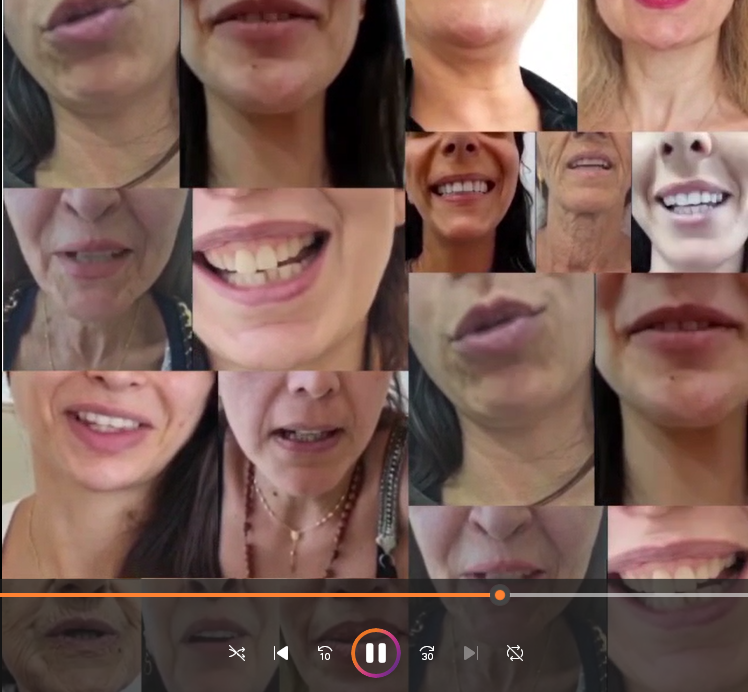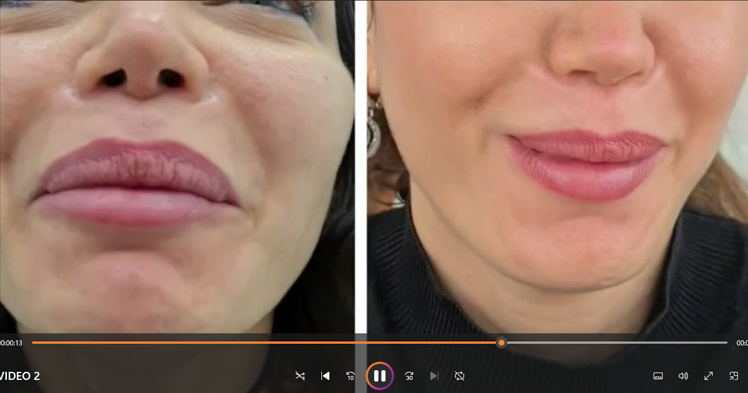Short Communication
Volume 5 Issue 1 - 2023
The “Dancing Chin”
Middle East Institute of Health, University Hospital, Lebanon
*Corresponding Author: Ibrahim Y Achkar, Middle East Institute of Health, University Hospital, Lebanon.
Received: June 11, 2023; Published: June 26, 2023
I'd like to present a new term that patients, physicians, and plastic surgeons should get to know: the "Dancing chin."
The term "dancing chin" refers to an over-the-top movement of the three muscles in the chin (namely the mentalis, depressor labii inferior, and depressor annuli oris) and the primary neck muscle known as the platysma, which can occur both intentionally and involuntarily, such as in the case of a tic.
While examining my patients' faces, I noticed that their chins were moving while they spoke to me. It was difficult for me to convince them of the importance of identifying this condition. To address this, I requested permission from some of my patients to film their lips, chin, and neck while they speak, and they agreed. After examining and comparing multiple videos and merging them into one frame, I discovered that the chin moves in a “dancing” manner. (Refer to the attached videos 1.)
I therefore made the decision to educate all my patients and colleagues about this pathology.
In my opinion it is very important to aware plastic surgeons, physicians and patients of this phenomenon and I couldn't find an amusing and easy way to remember it as to term it: "Dancing chin".
It is commonly understood that the chin is situated at the lower part of the face and consists of the front central part of the jawbone, surrounded by muscles, soft tissues, fat pads, and skin. The bucco-labial muscles, including the mentalis muscle, the depressor labii inferioris, and the depressor anguli oris, are the primary muscles responsible for controlling the movements of the chin and coordinating mandibular movements during speaking and chewing. The mentalis muscle is known as the "pouting muscle" as it lifts the skin of the chin, elevates and protrudes the lower lip. On the other hand, the depressor labii inferioris lowers the lower lip, while the depressor anguli oris depresses the corner of the mouth. These muscles, together with the platysma muscle in the neck, are believed to play an essential role in the phenomenon referred to as the "Dancing chin".
The deformity of the chin, such as excessive chin prominence or chin ptosis, or chin grooves like marionette lines, and unattractive dimpling/pebbling effect on the skin surface—commonly referred to as orange peel skin or golf ball chin—could be caused by a long period of "Dancing chin" affecting these muscles; this condition alters the harmony of the face and frequently requires genioplasty.
As the phenomenon "Dancing chin" is a problem that can be avoided, plastic surgeons, medical professionals, and patients should be aware of its aesthetic implications.
Treatment of the dancing chin is a self-control of the facial movements or botulinum toxin injection to relax chin muscles that diminish the dancing movement and prevent complications and improve appearance of the chin (video 2).
Legend: Videos:1 and 2:” Dancing Chin
Video 1
Video 2
Citation: Ibrahim Y Achkar. (2023). The “Dancing Chin”. Journal of Otolaryngology - Head and Neck Diseases 5(1). DOI: 10.5281/zenodo.8088700
Copyright: © 2023 Ibrahim Y Achkar. This is an open-access article distributed under the terms of the Creative Commons Attribution License, which permits unrestricted use, distribution, and reproduction in any medium, provided the original author and source are credited.


